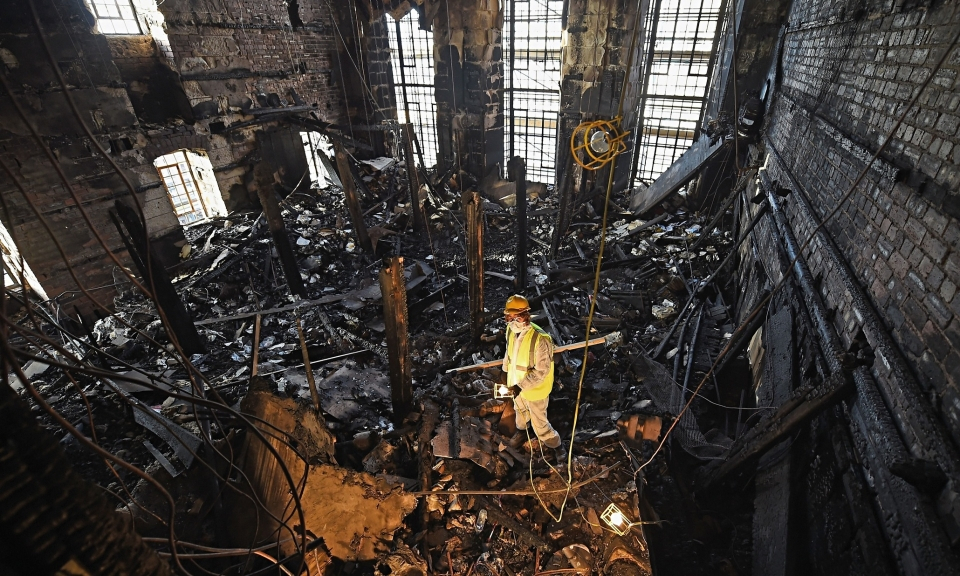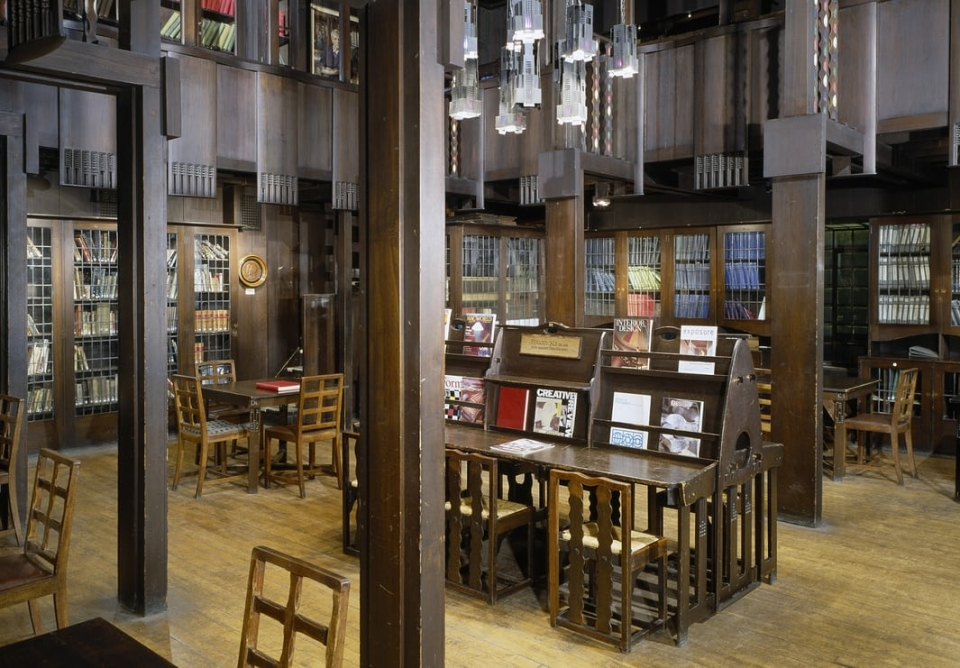From weird relics to oak columns made of cheap pine, the rebuilding of Charles Rennie Mackintosh’s library has unearthed some secrets.
But will the replica leave it looking like a cheap kitchen?
....
The library was one of the most documented spaces in history, with original construction drawings, a complete set of measured drawings taken in the early 1990s and countless photographs, including the Guardian’s own 360-degree interactive panorama. But despite the thorough records, the fire revealed a number of surprises.
“With Mackintosh, you expect it to be amazing craftsmanship,” says Page. “We had always assumed, for example, that the great timber columns holding up the mezzanine, which really defined the room, were carved from single pieces of oak. But the fire has shown them to be nailed together from a few lengths of pine, then covered with a thin facing plate.”
“It’s basically like a shop fit-out,” says Ranald McInnes, head of heritage management at Historic Scotland, picking at the charred nails that now protrude from these black stumps. The Kauri pine, from which the columns were built, was a cheap ballast material, he says, brought back in boats from New Zealand and readily available at the Glasgow shipyards. It has since become a protected species, so there are now questions over what to use instead. Wouldn’t Mack’s joiners just head to the nearest builders’ merchants and see what was going cheap?
...
It’s not quite so simple. The genius of the School of Art, and many of Mackintosh’s other works, is the combination of off-the-peg materials with things that have been exquisitely crafted. On the one hand, he specified timber “from the saw” and plaster “from the float”, while on the other he was constantly on site, breathing down his workers’ necks, insisting that the ends of steel beams be carefully stripped and twisted into impossibly elaborate decorative curls. As project manager Liz Davidson puts it: “He was a magician. He created magic out of base materials.”
So can the magic be restored? ... “It will feel new, but the patina will come with use,” insists Page. “We have to build up from the base blocks – strip it back and then allow the clutter to develop. We shouldn’t force it into the image that we remember.”
And what we remember isn’t necessarily what Mackintosh intended.

